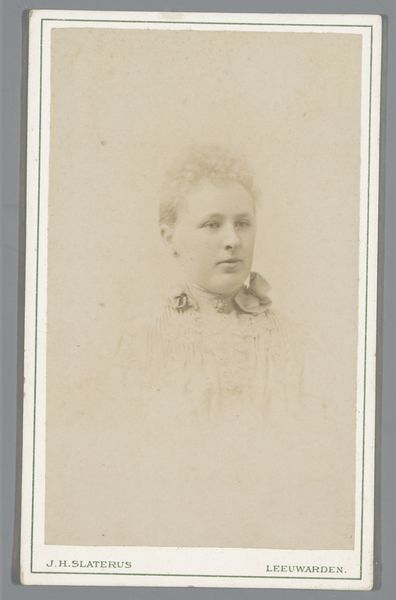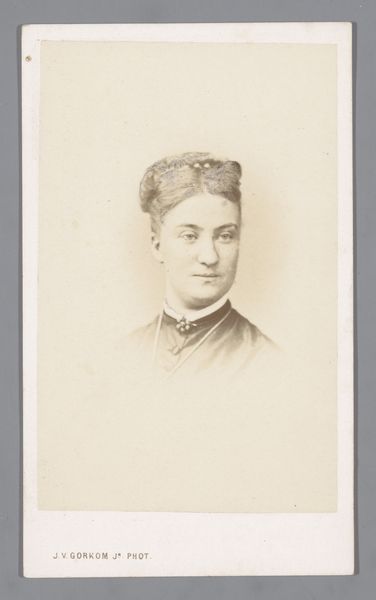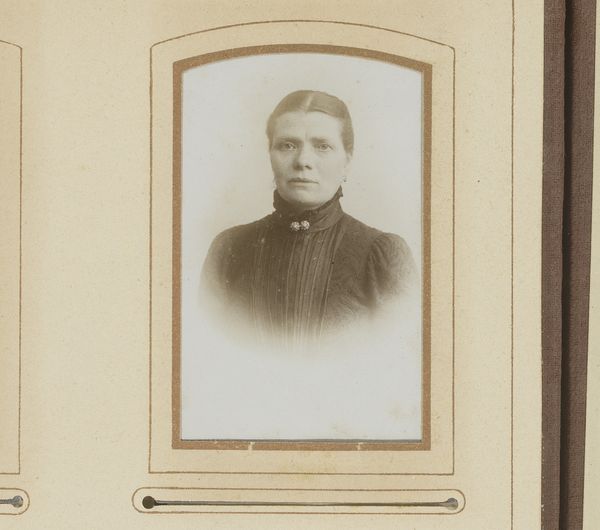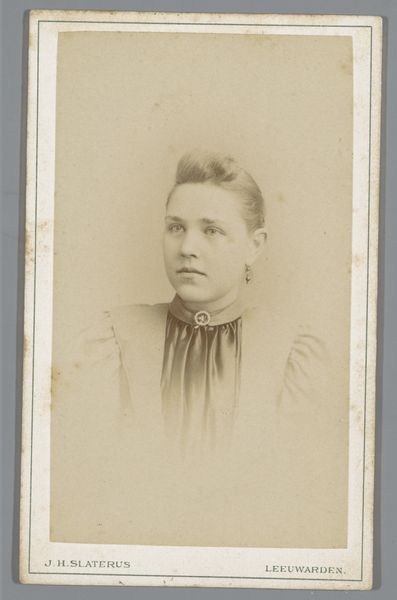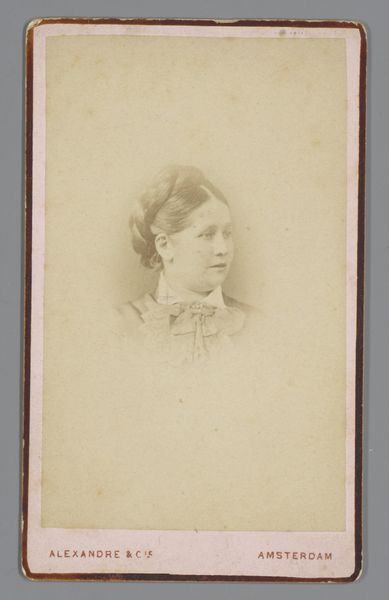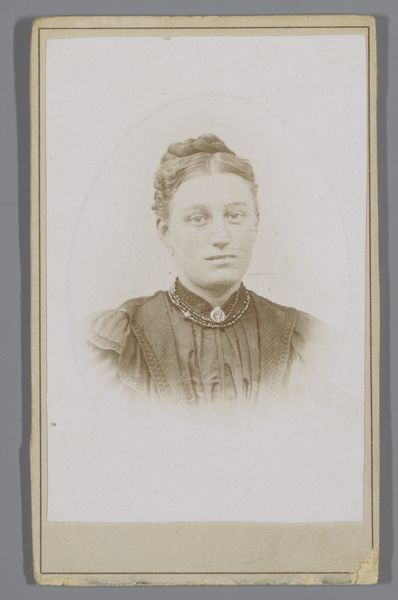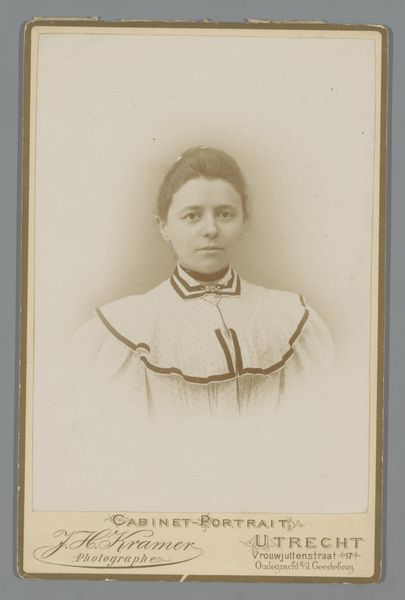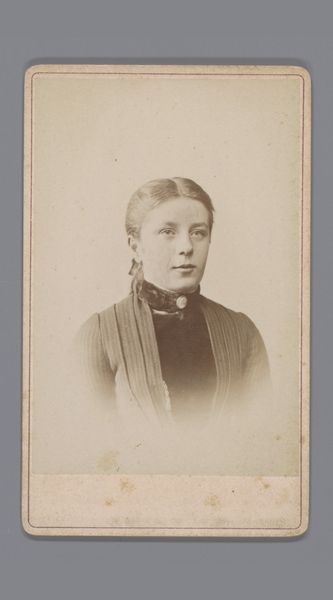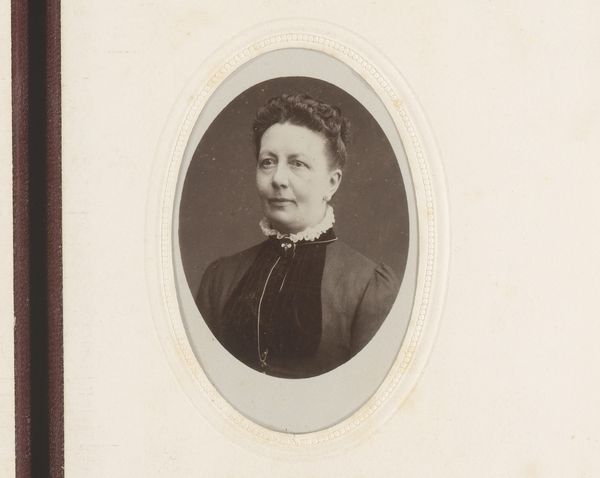![Untitled [portrait of an unidentified woman] by Jeremiah Gurney](/_next/image?url=https%3A%2F%2Fd2w8kbdekdi1gv.cloudfront.net%2FeyJidWNrZXQiOiAiYXJ0ZXJhLWltYWdlcy1idWNrZXQiLCAia2V5IjogImFydHdvcmtzL2MzNDRkOWU2LWNiM2EtNGM2Yi04YzQ5LTBhZDA1OTlkZmY0Ny9jMzQ0ZDllNi1jYjNhLTRjNmItOGM0OS0wYWQwNTk5ZGZmNDdfZnVsbC5qcGciLCAiZWRpdHMiOiB7InJlc2l6ZSI6IHsid2lkdGgiOiAxOTIwLCAiaGVpZ2h0IjogMTkyMCwgImZpdCI6ICJpbnNpZGUifX19&w=3840&q=75)
Untitled [portrait of an unidentified woman] 1858 - 1869
0:00
0:00
daguerreotype, photography
#
portrait
#
daguerreotype
#
photography
#
united-states
#
portrait drawing
#
portrait art
Dimensions: 3 5/8 x 2 1/8 in. (9.21 x 5.4 cm) (image)4 1/8 x 2 1/2 in. (10.48 x 6.35 cm) (mount)
Copyright: Public Domain
Curator: This daguerreotype portrait is captivating, don’t you think? Its creation is attributed to Jeremiah Gurney, crafted sometime between 1858 and 1869. What strikes you most about it? Editor: A certain quiet dignity. She isn't smiling, and that steadiness in her gaze makes her presence feel immediate. It’s like she’s right here, but it’s filtered through time and that sepia tone. There’s a haunting simplicity to the composition. Curator: Daguerreotypes do lend themselves to that haunting quality, don’t they? As the first commercially successful photographic process, they democratized portraiture to some degree. This image resonates as it represents a pivotal shift in the depiction and perception of the individual, offering new layers of understanding of representation. Editor: Absolutely. Consider the historical context. Photography changed how people saw themselves, and how they wanted to be seen by others. This wasn't just a picture; it was a statement. In her subtle posture and simple style, she seems aware of the image she's putting forth, how photography now holds her power. Curator: Precisely. And, as an iconographer, I can’t help but notice how even without overt symbols, she is carefully presenting herself. Consider the tight buttons and the small brooch. Such a composed, self-possessed visual archetype embodies a larger societal emphasis on proper presentation and internal reserve. It offers glimpses of emerging identities of women from this time, shaped and framed by evolving socio-cultural expectations. Editor: You’re right to notice the detail in her dress. What seems like a simple, unadorned choice speaks volumes about the conventions of her social milieu, which gives the overall piece further dimension. Photography offered the middle classes access to visual documentation that had formerly been the preserve of the wealthy. This portrait would therefore likely be her and her family's own symbol. Curator: A precious thing, an affordable memento and marker of identity, wouldn't you say? These images have incredible weight, capturing so much within one silvered frame. Editor: Yes, something to really dwell on in the present as we reconsider the past.
Comments
No comments
Be the first to comment and join the conversation on the ultimate creative platform.

